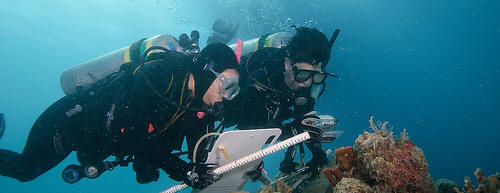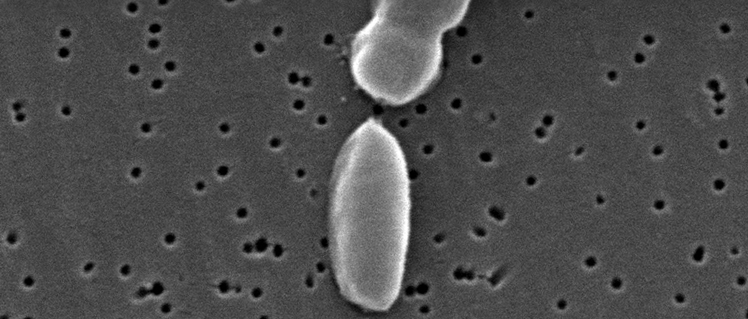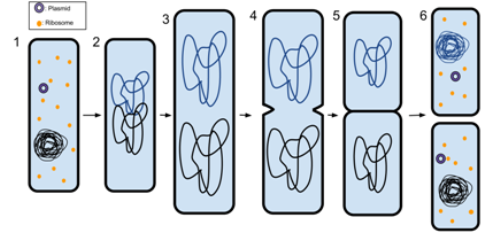Nutrition & Reproduction
Nutrition for this bacterium is heterotrophic
just like many charismatic megafauna such as the
giraffe
or
chimpanzee.
The organism can be found either as a free living bacterium, forming
a symbiotic relationship with mollusks, or being pathogens in humans.
As a free living bacterium, V. parahaemolyticus obtains its nutrients in its sodium chloride habitat. This species will grow in 0.5-9% sodium chloride concentrated mediums. The nutrients that make up this bacterium and that are needed for most bacteria are primarily carbon, oxygen, nitrogen, hydrogen and phosphorous.
This bacterium is found in mollusks due to simple nutrient acquisition for the organism. Mollusks, specifically oysters, can be filter feeders. Filter feeding allows the V. parahaemolyticus to live in the tissues of the host and absorb nutrients. The species consumes dissolved organic material from the mollusk.
This species can be passed from seafood to humans through
consumption of raw/undercooked seafood. This species can also get
in humans through open wounds. A person who goes
into warm sea water with an open wound has a risk of this bacterium coming into the
body. In humans, the b acterium performs hemolysis from the
hemolysin it produces. Nutrients are plentiful in the human
body.
acterium performs hemolysis from the
hemolysin it produces. Nutrients are plentiful in the human
body.
Reproduction of this bacterium is like other bacteria in that it reproduces by means of binary fission. Binary fission is a means of asexual reproduction. Other bacterial cells like E. coli and Deinococcus radiodurans also reproduce via binary fission. Two daughter cells that are identical to the parent cell are produced from this form of reproduction.
Binary fission has six stages. Here is a guide to each step, according to the figure below, with number one being a parent bacterial cell.
At step two, as the cell is beginning to elongate it brings the DNA to the center to replicate.
During the third step, the cell elongates and the DNA is pushed away from the center.
In the fourth step, the cross wall of the new cells begin to form.
The cross wall of the cells is completely formed and connected to each end at the fifth step.
The new, identical daughter cells are completed in number six.
For a more detailed process of binary fission, check out McGraw-Hill for an informational video. Just press play!
Like I said earlier, V. parahaemolyticus consumes nutrients with the help of mollusks. To learn more, check out the Interactions portion of the website!

